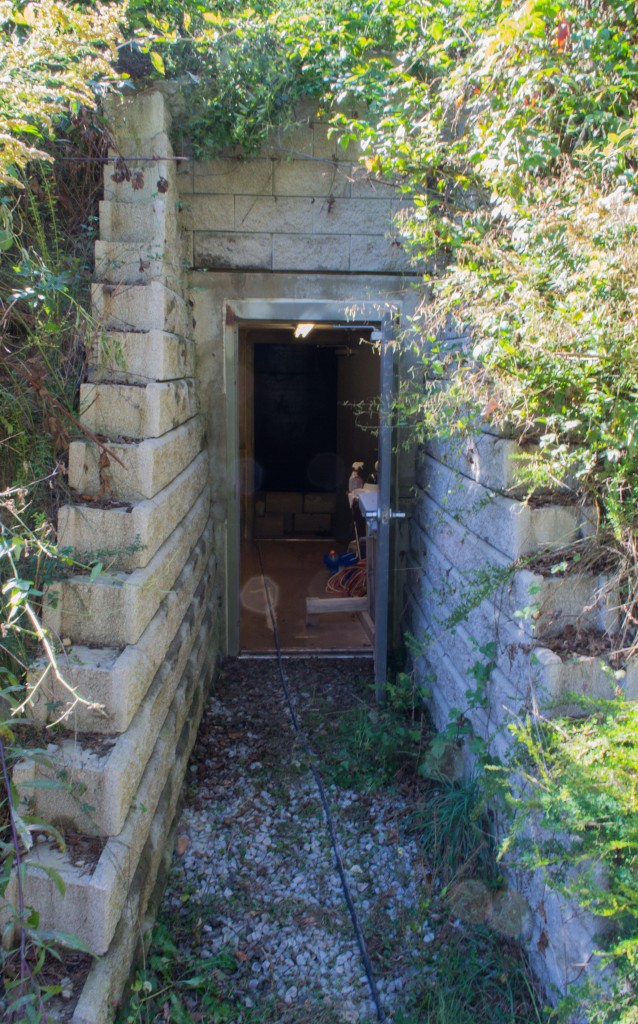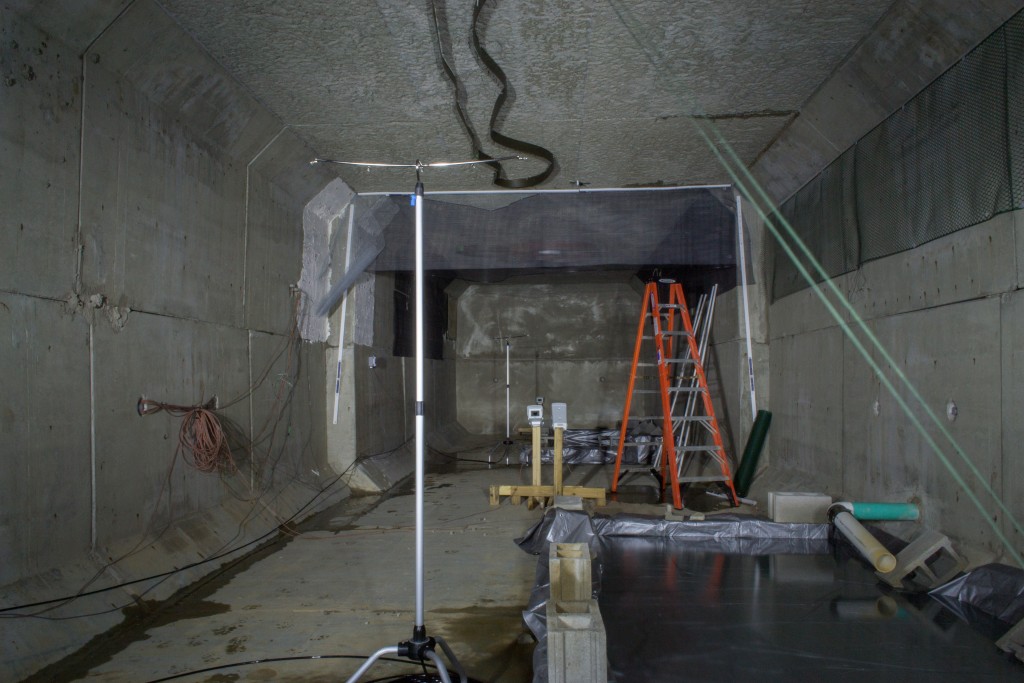
GSU & TNC Collaborate on Artificial Cave Construction
In collaboration with the Tennessee Chapter of The Nature Conservancy, PhD students Kyle Gabriel and John Neville of Georgia State University traveled to Tennessee on October 14, 2015, to install a humidity regulation system in a 13,000 ft3 artificial cave. This underground structure was built in 2012 in order to conduct research on bats. As humidity plays a major role in both bat roost selection and overall health throughout hibernation, the ability to mimic the high-humidity environment of a natural hibernaculum is crucial to effective experimentation. The system operates on free and open-source software, developed by Kyle Gabriel, to remotely monitor and regulate environmental conditions. The system monitors the environment with digital sensors and provides discrete PID-control of a commercial misting system in order to regulate and maintain 90% humidity, while cellular internet access permits remote monitoring and control while off-site.

Graphical representation of the artificial cave (© The Nature Conservancy).

The site of the artificial cave (below ground, unseen) and the control room.

The control room, where operation of the thermal cameras and humidity regulation system is carried out.

The secure entryway to the artificial cave.

Viewing down the artificial cave corridor from the end of the entrance.

Viewing down the artificial cave corridor toward the entrance

Viewing down the artificial cave corridor toward the entrance, with the misting towers in operation.
All Photos © Kyle Gabriel



